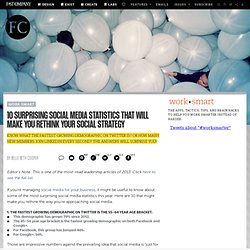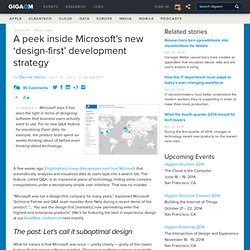

2016 année du désenchantement numérique? Depuis le début des années 2010, le numérique a changé de statut en devenant un sujet de société central.

Largement adopté par toutes les générations sous forme de téléphones, de tablettes et de consoles, mais surtout de nouveaux usages, il a plané comme une menace et comme une opportunité, faisant prendre conscience à beaucoup d’organisations de la fragilité de leur modèle et de la nécessité de prendre le virage de la transformation numérique.
Amazon Fire Phone : le test. Véritable portail de services Amazon, qui va du shopping en ligne aux ebooks en passant par de la musique et de la vidéo en streaming, le smartphone Fire Phone est fondamentalement destiné à faire une chose et une seule : faire renouveller l’abonnement annuel à Amazon Premium.

Ce nouveau terminal tente de faire son chemin dans un marché du smartphone saturé avec des spécifications plus élevées que celles attendues, et quelques innovations qui surclassent les grandes marques de smartphones bien établies. The Internet in 2015. 2014 and Online Marketing Future. 2013 will be known as the year organizations began embracing different tactics for digital marketing in a big way.

It will also be known as the year of the biggest social media changes: Twitter’s IPO announcement, Google and Facebook’s algorithm updates, and the list goes on. This trend of disrupting the digital marketing arena will continue into 2014 and beyond. 10 Surprising Social Media Statistics That Will Make You Rethink Your Social Strategy. Editor's Note: This is one of the most-read leadership articles of 2013.

Click here to see the full list. If you’re managing social media for your business, it might be useful to know about some of the most surprising social media statistics this year. Here are 10 that might make you rethink the way you’re approaching social media. 1. The fastest growing demographic on Twitter is the 55–64 year age bracket. This demographic has grown 79% since 2012. Those are impressive numbers against the prevailing idea that social media is "just for teenagers.
" Rethink it: Keep older users in mind when using social media, particularly on these three platforms. Smart Machines: IBM’s Watson and the Era of Cognitive Computing. Now available from Columbia Business School Publishing: Smart Machines: IBM’s Watson and the Era of Cognitive Computing—by John E.

Kelly III, Director of IBM Research, and Steve Hamm, writer at IBM and former business and technology journalist—introduces readers to the fascinating world of "cognitive systems," allowing a glimpse into the possible future of computing. Today, the world is on the cusp of a new phase in the evolution of computing--the era of cognitive systems. The victory of IBM’s Watson on the TV game show Jeopardy! Signaled the dawn of this new era. Now, scientists and engineers at IBM and elsewhere are pushing the boundaries of science and technology with the goal of creating machines that sense, learn, reason and interact with people in new ways. Read an excerpt from the book (click on the icon on the bottom right-hand side to view in full screen): About the authors: John E. Imaginer ensemble le futur du travailZevillage : télétravail, coworking et nouvelles formes de travail.
Coworking at co.lab. A peek inside Microsoft’s new ‘design-first’ development strategy. A few weeks ago, I highlighted a new data-analysis tool from Microsoft that automatically analyzes and visualizes data as users type into a search bar.

The feature, called Q&A, is an impressive piece of technology, hiding some complex computations under a deceptively simple user interface. That was no mistake. “Microsoft was not a design-first company for many years,” explained Microsoft Technical Fellow and Q&A team member Amir Netz during a recent demo of the product. “… You see the design-first [mentality] now permeating even the highest-end enterprise products.” (We’ll be featuring the best in experience design at our RoadMap conference next month). Eating My (Key)Words: Changing The Way We Think About SEO. I have glimpsed the future of search, and it is not keyword-driven.

While I have long been an advocate of using keywords as an indicator of a searcher’s intent, I am about to eat my words. The truth is that search is heading in a direction that most of us could not have foreseen… a technically complex and varied amalgamation of platforms, devices, and inputs. What I mean by this is that as the search engines become more focused on discovering user intent based on various elements that can be measured before a user even types anything — location, search history, mobility, circles, etc. — it becomes less important what that searcher actually typed in to access the SERP. And with the rise of conversational search touted in platforms like Google Now and Google Glass, the searcher may not even type at all. Keywords In Real Life. Is Excel dead as a management reporting tool. FAQ: All About The New Google "Hummingbird" Algorithm. Google has a new search algorithm, the system it uses to sort through all the information it has when you search and come back with answers.

It’s called “Hummingbird” and below, what we know about it so far. What’s a “search algorithm?” That’s a technical term for what you can think of as a recipe that Google uses to sort through the billions of web pages and other information it has, in order to return what it believes are the best answers.